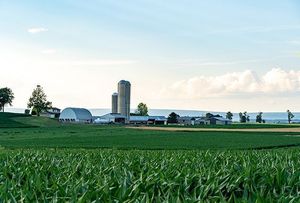Reconciliation Legislation Provides Better Access to Producers for Farm Safety Net and Crop Insurance Programs
 The recently passed reconciliation bill offers welcome updates to U.S. farmers and ranchers while the long-overdue farm bill remains stalled in Congress. Described as a “farm bill light,” the legislation boosts support for both crop and livestock producers.
The recently passed reconciliation bill offers welcome updates to U.S. farmers and ranchers while the long-overdue farm bill remains stalled in Congress. Described as a “farm bill light,” the legislation boosts support for both crop and livestock producers.
Key changes include expanded base acres and higher reference prices for safety net programs, such as Agricultural Risk Coverage (ARC) and Price Loss Coverage (PLC), which make payments more likely if commodity prices fall. Reference prices for major crops, such as corn, soybeans, and wheat, rose significantly. Farmers will now automatically receive the higher payment between the ARC and PLC, simplifying their decision-making process.
Livestock producers benefit from quicker payouts under the Livestock Forage Disaster Program and expanded coverage under the Livestock Indemnity Program. It now covers 100% of predator-related losses and 75% of losses due to extreme weather.
Crop insurance coverage also improved, providing better access to risk management for producers. The bill provides area-wide coverage of up to 90% for individual yield or revenue coverage, aggregated across multiple commodities. It also increases Supplemental Coverage Option (SCO) premium support from 65% to 80%. The bill also directs RMA to enhance the coverage level availability for Whole Farm Revenue Protection (WFRP) and similar crop and livestock income protection to 90%. It will also extend the Beginning Farmer and Rancher (BFR) benefits from five years to ten years, with enhanced premium support starting at 15% in the first year and gradually decreasing annually to reach 10% by year five, remaining at 10% through year ten.
While these updates reduce uncertainty, ag leaders caution that a full farm bill is still needed to address remaining gaps and provide lasting stability for U.S. agriculture.
Read more about the enhanced farm safety net and the crop insurance here.
